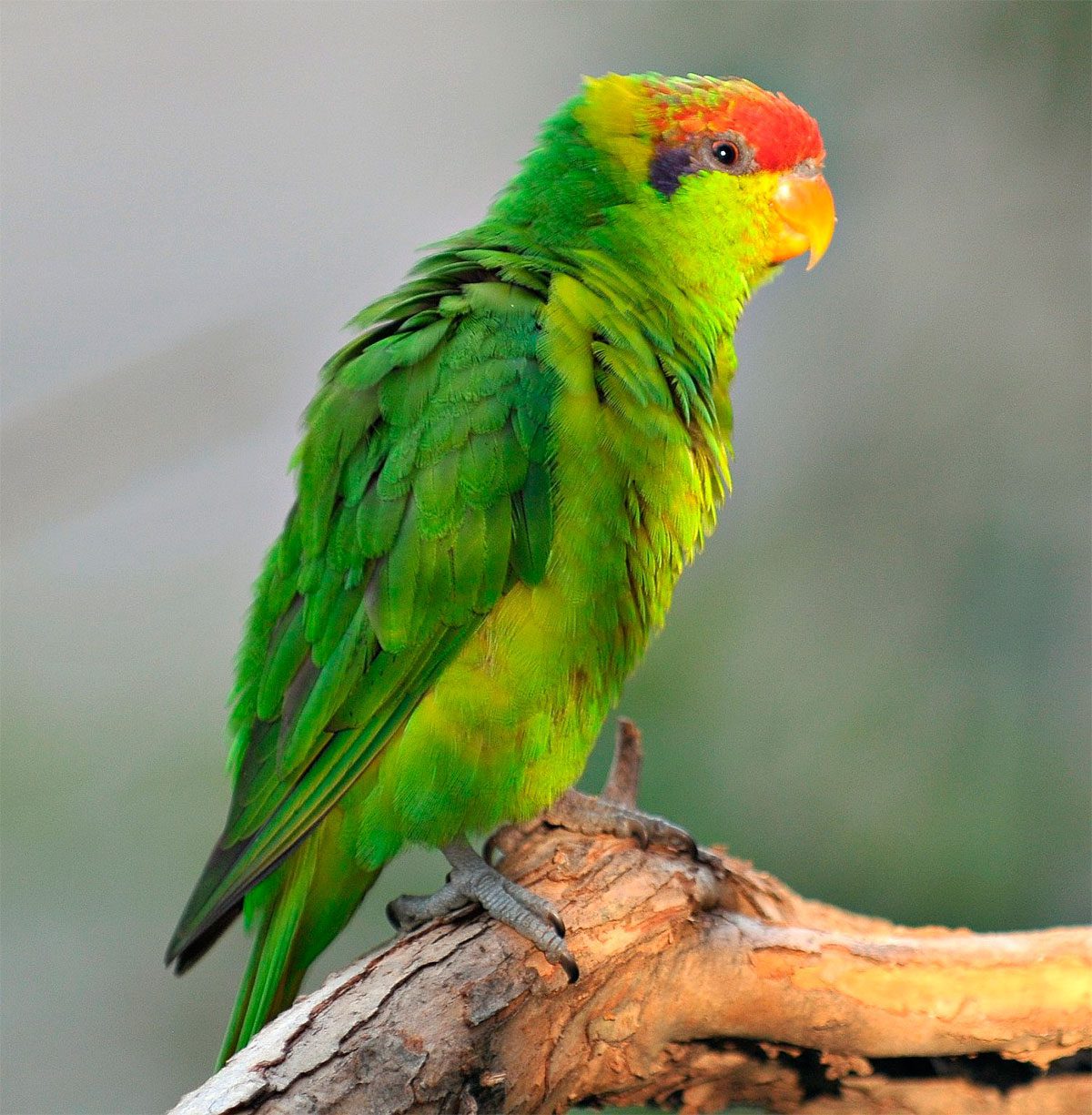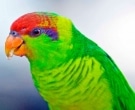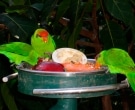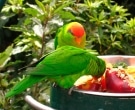Content |
|---|
Description
20 cm.. length and a weight between 65 and 75 gr.
The Iris Lorikeet (Psitteuteles iris) It has three subspecies recognized including the nominal, the extent and gradation of red and purple coloration in the head varies among the three subspecies:
-
Psitteuteles iris iris
The Iris Lorikeet (Psitteuteles iris) has a plumage, in general, Green with stripes of color green light in the underparts.
The forecrown, lores and zone extending in a narrow line around the Crown rear, red.
Cheeks yellowish green. The eye-stripe and headphones feathers purple.
Center of the crown, Turquoise, extending it until it nape in a large yellow-green necklace.
The chest and abdomen are yellowish-green. The feathers of the neck and the chest they have dark green edges. Wings and tail green.
Bill and irises orange. The legs greyish black.It presents sexual dimorphism. The Red coloration of the female on head It is more off and less extensive that in the male.
-
Psitteuteles iris rubripileum
It has all the forecrown and crown Red and the headphones feathers Violet Blue.
-
Psitteuteles iris wetterensis
Larger, the crown It is red and mixed with Violet Blue variable extension. The cheeks they are dark green. The chest bright yellow contrast with the Panza green.
Note:
It has placed at times as subspecies to the Neopsittacus. The validity of the subspecies Psitteuteles iris rubripileum, is questionable, and it was claimed that the differences with the nominal species It may be due to age or individual variation.
- Sound of the Iris Lorikeet.
Habitat:
Found up to a height of 1.500 meters above the sea level.
The Iris Lorikeet They inhabit monsoon forests, plantations and agricultural land with flowering trees.
Although they are apparently more common in the higher elevations, its local abundance is based on the availability of trees with flowers for food, as is the case with most Lori.
The flight of the Iris Lorikeet fast and slightly wavy.
Reproduction:
Little is known about the breeding ecology of this species in its natural environment.. A record of a captive calf states that the laying is of two eggs, with a period of incubation of 23 days and emancipation some nine weeks more afternoon.
Food:
Feeds of nectar of the flowers Sesbania sp.
Distribution:
Size of the area of distribution (reproduction / resident): 31.300 km2
Endemic to the Islands Wetar and Timor (Indonesian).
Subspecies distribution:
-
Psitteuteles iris Iris
: West of Timor.
-
Psitteuteles iris Rubripileum
: It is from Timor.
-
Psitteuteles iris Wetterrensis
: Wetar island.
Conservation:
• Current IUCN Red List category: Near threatened
• Population trend: Decreasing
There are no data on population trend; But, the species is suspected to be in decline due to the capture and the degradation of the habitat.
Previously considered common, but not found in the Island of Wetar during a search in 1990, found only in two places during a study of nine weeks in the jungle in Timor West in 1993. Considered main many that the Olive headed Lorikeet and the Coconut Lorikeet in East Timor. World population around 10.000 specimens. VULNERABLE.
"Iris Lorikeet" in captivity:
Quite rare.
Alternative names:
– Iris Lory, Iris Lorikeet (ingles).
– Loriquet iris, Loriquet d’Iris (French).
– Irislori (German).
– Lóris-íris (Portuguese).
– Lori de Goldie, Lori Iris, Tricogloso Iris (español).
scientific classification:
– Order: Psittaciformes
– Family: Psittaculidae
– Scientific name: Psitteuteles iris
– Citation: (Temminck, 1835)
– Protonimo: Psittacus iris
Images “Iris Lorikeet”:
————————————————————————————————
“Iris Lorikeet” (Psitteuteles iris)
Sources:
– Avibase
– Parrots of the World – Forshaw Joseph M
– Parrots A Guide to the Parrots of the World – Tony Juniper & Mike Parr
– BirdLife.org
– Photos:
1 – By Dirk (originally posted to Flickr as DSC_7897) [CC-BY-2.0], via Wikimedia Commons
2 – By Dirk (originally posted to Flickr as DSC_2608) [CC-BY-2.0], via Wikimedia Commons
3 – By Asim Bharwani (originally posted to Flickr as San Diego Zoo) [CC-BY-2.0], via Wikimedia Commons
4 – By tinyfroglet [CC-BY-2.0], via Wikimedia Commons
5 – By Liam from Washington DC, USA (IMG_9040Uploaded by snowmanradio) [CC-BY-2.0], via Wikimedia Commons
– Sounds: Filip Noel (Xeno-canto)







is just the source of information qe yo busco